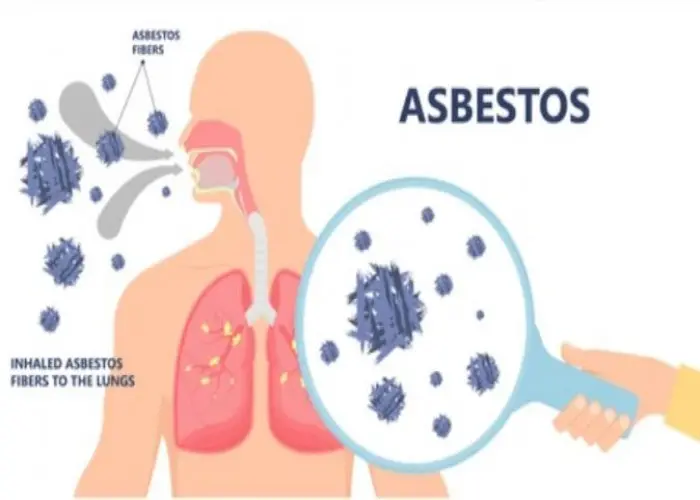 Welcome
Welcome
“May all be happy, may all be healed, may all be at peace and may no one ever suffer."
Cardiogenic shock

Cardiogenic shock is a life-threatening medical condition that occurs when the heart is unable to pump enough blood to meet the body's needs. It is usually caused by severe damage to the heart muscle, such as a heart attack, severe arrhythmias, or heart valve problems. Symptoms of cardiogenic shock may include low blood pressure, rapid heart rate, shortness of breath, confusion, and organ dysfunction. Treatment typically involves aggressive supportive care, such as administering fluids, medications to improve heart function, and oxygen therapy. In some cases, mechanical support devices, such as ventricular assist devices (VADs) or extracorporeal membrane oxygenation (ECMO), may be necessary to help the heart pump blood more effectively. It is important to seek immediate medical attention if you experience symptoms of cardiogenic shock, as early intervention can greatly improve outcomes.
Research Papers
Disease Signs and Symptoms
- Rapid breathing
- Pressure, fullness or a squeezing pain in the center of the chest that lasts for more than a few minutes
- Cold hands and feet
- Pale skin color (pallor)
- Excessive sweat
- Low blood pressure (hypotension)
- Weak pulse
- Loss of consciousness (fainting)
- Rapid heartbeat (tachycardia)
- Shortness of breath (dyspnea)
- Pain spreading to shoulder, one or both of arms, back, or even your teeth and jaw
Disease Causes
Cardiogenic shock
In most cases, a lack of oxygen to your heart, usually from a heart attack, damages its main pumping chamber (left ventricle). Without oxygen-rich blood flowing to that area of your heart, the heart muscle can weaken and go into cardiogenic shock.
Rarely, damage to your heart's right ventricle, which sends blood to your lungs to get oxygen, leads to cardiogenic shock.
Other possible causes of cardiogenic shock include:
- Inflammation of the heart muscle (myocarditis)
- Infection of the heart valves (endocarditis)
- Weakened heart from any cause
- Drug overdoses or poisoning with substances that can affect your heart's pumping ability
Disease Prevents
Cardiogenic shock
The best way to prevent cardiogenic shock is to make lifestyle changes to keep your heart healthy and your blood pressure in check.
- Don't smoke, and avoid secondhand smoke. If you smoke, the best way to reduce your heart attack risk is to quit.
- Maintain a healthy weight. Being overweight contributes to other risk factors for heart attack and cardiogenic shock, such as high blood pressure, cardiovascular disease and diabetes. Losing just 10 pounds (4.5 kilograms) can lower blood pressure and improve cholesterol levels.
- Eat less cholesterol and saturated fat. Limiting these, especially saturated fat, can reduce your risk of heart disease. Avoid trans fats.
- Use less salt. Too much salt (sodium) leads to fluid buildup in the body, which can strain the heart. Aim for less than 2,300 milligrams (mg) a day of sodium. Salt can be found in many canned and processed goods, so it's a good idea to check food labels.
- Cut back on sugar. This will help you avoid nutrient-poor calories and help you maintain a healthy weight.
- Limit alcohol. If you choose to drink alcohol, do so in moderation. For healthy adults, that means up to one drink a day for women and up to two drinks a day for men.
- Exercise regularly. Exercise can lower your blood pressure and improve the overall health of your blood vessels and heart. Get at least 150 minutes of moderate aerobic activity or 75 minutes of vigorous aerobic activity a week, or a combination of moderate and vigorous activity. It's recommended to spread out this exercise during the course of a week. Greater amounts of exercise will provide even greater health benefits.
If you have a heart attack, quick action can help prevent cardiogenic shock. Seek emergency medical help if you think you're having a heart attack.
Disease Treatments
Cardiogenic shock treatment focuses on reducing the damage from lack of oxygen to your heart muscle and other organs.
Emergency life support
Most people who have cardiogenic shock need extra oxygen. If necessary, you'll be connected to a breathing machine (ventilator). You'll receive medications and fluid through an IV line in your arm.
Medications
Fluids and plasma are given through an IV. Medications to treat cardiogenic shock are given to increase your heart's pumping ability and reduce the risk of blood clots.
- Vasopressors. These medications are used to treat low blood pressure. They include dopamine, epinephrine (Adrenaline, Auvi-Q), norepinephrine (Levophed) and others.
- Inotropic agents. These medications, which help improve the pumping function of the heart, may be given until other treatments start to work. They include dobutamine, dopamine and milrinone.
- Aspirin. Aspirin is usually given immediately to reduce blood clotting and keep blood moving through a narrowed artery. Take an aspirin yourself while waiting for help to arrive only if your doctor has previously told you to do so for symptoms of a heart attack.
- Antiplatelet medication. Emergency room doctors might give you drugs similar to aspirin to help prevent new clots from forming. These medications include clopidogrel (Plavix), tirofiban (Aggrastat) and eptifibatide (Integrilin).
- Other blood-thinning medications. You'll likely be given other medications, such as heparin, to make your blood less likely to form clots. IV or injectable heparin usually is given during the first few days after a heart attack.
Surgeries and other procedures
Medical procedures to treat cardiogenic shock usually focus on restoring blood flow through your heart. They include:
- Angioplasty and stenting. If a blockage is found during a cardiac catheterization, your doctor can insert a long, thin tube (catheter) equipped with a special balloon through an artery, usually in your leg, to a blocked artery in your heart. Once in position, the balloon is briefly inflated to open the blockage.
- A metal mesh stent might be inserted into the artery to keep it open over time. In most cases, you doctor will place a stent coated with a slow-releasing medication to help keep your artery open.
- Balloon pump. Your doctor inserts a balloon pump in the main artery off of your heart (aorta). The pump inflates and deflates within the aorta, helping blood flow and taking some of the workload off your heart.
- Extracorporeal membrane oxygenation (ECMO). ECMO helps improve blood flow and supplies oxygen to the body. Blood is pumped outside of your body to a heart-lung machine that removes carbon dioxide and sends oxygen-filled blood back to tissues in the body.
If medications and other procedures don't work to treat cardiogenic shock, your doctor might recommend surgery.
- Coronary artery bypass surgery. This surgery uses a healthy blood vessel in your leg, arm or chest to create a new pathway for blood so it can flow around a blocked or narrowed artery. Your doctor might suggest this surgery after your heart has had time to recover from your heart attack. Occasionally, bypass surgery is done as an emergency treatment.
- Surgery to repair an injury to your heart. Sometimes an injury, such as a tear in one of your heart's chambers or a damaged heart valve, can cause cardiogenic shock. Surgery might correct the problem.
- Ventricular assist device (VAD). A mechanical device can be implanted into the abdomen and attached to the heart to help it pump. A VAD might extend and improve the lives of some people with end-stage heart failure who are waiting for new hearts or aren't able to have a heart transplant.
- Heart transplant. If your heart is so damaged that no other treatments work, a heart transplant may be a last resort.
Disease Diagnoses
Disease Allopathic Generics
-
Adrenaline
At the injection site if there is no improvement in the patient's condition.
1/2cc or 1/4cc medicine should be injected into the meat. If necessary, the injection can be given in the other arm again after 5-10 minutes. A registered physician's permission is required.
-
Promethazine Hydrochloride
Then inject promethazine hydrochloride without delay.
Slow Intervenus injection should be given in case of emergency. Or Deep IM injection should be given and if necessary the injection can be given again after 15/20 minutes.
-
Dextrose
If there is bronchospasm. Inj in 5% Dextrose in aqua. Aninophyline 2.5mg/ 5m/ 10ml/ 250mg should be mixed and given 5/10 drops per minute.
-
Dexamethasone
1cc medicine should be injected into the meat.
Disease Ayurvedic Generics
Disease Homeopathic Generics
Disease yoga
Cardiogenic shock and Learn More about Diseases

Dysarthria

Premature birth

Mitral valve stenosis

Growth plate fractures

Asbestosis

Corticobasal degeneration

Hyper Sex Apetite

Giardial Dysentry
Cardiogenic shock, Cardiogenic shock treatment, কার্ডিওজেনিক শক
To be happy, beautiful, healthy, wealthy, hale and long-lived stay with DM3S.
